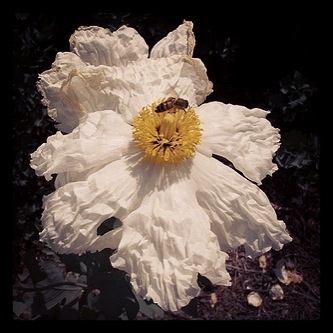 Soil pH
Soil pH
“The soil pH is a measure of the acidity or basicity in soils. A pH below 7 is acidic and above 7 is basic. Soil pH is considered a master variable in soils as it controls many chemical processes that take place. It specifically affects plant nutrient availability by controlling the chemical forms of the nutrient. The optimum pH range for most plants is between 5.5 and 7.0,[1] however many plants have adapted to thrive at pH values outside this range. — Wikipedia.org
Engage in any garden conversation and you are sure to touch upon soil pH and its importance for certainly plants. That said, many gardeners, myself included, really knows why it is important. In my reading for this post I discovered that one essential part of Soil pH in plant health is that the alkaline or acidic nature of your soil directly effects the amount and availability of various chemical nutrients that your plants can use. If your soil pH is too far at either of the extremes then nutrients will not dissolve easily and therefore will not be available for your plants.
According to a post on the Organic Gardening web site,
“Most nutrients that plants need can dissolve easily when the pH of the soil solution ranges from 6.0 to 7.5. Below pH 6.0, some nutrients, such as nitrogen, phosphorus, and potassium, are less available. When pH exceeds 7.5, iron, manganese, and phosphorus are less available. — “Understanding pH: What is pH and how does it affect your plants?”, Organic Gardening
Additionally, and what is usually discussed more frequently, is that some plants — notably blueberries and hydrangeas require certain soil pH to thrive. Unless you are dealing with these specialized plants, or plants from a different native environment to where they are being grown, a balanced pH is probably best.
Because most garden soil is amended in some way, if you are planning on growing plants with specific pH needs, you will need to test the soil directly from the beds where they are to be placed as garden bed soil may differ greatly from the native soils found in your area.
There are a wide variety of ways of testing soil pH, using both traditional knowledge and high technology. If you find yourself needing to check pH frequently, here are a number of products available from Amazon.com that might assist you – Soil pH Testing products and devices from Amazon.com.
More information on Soil pH:
- Leaf Arrangement
- Nitrogen Fixaton
- Stoma
- Parasite/Parasitism
- Xeriscaping
- Deadhead/Deadheading
- Fungus
- Petal
- Fruit
- Cotyledon
- Epiphyte
- Humus
- Conifer
- Deciduous
- Hybrid/Hybridization
- Acclimatization/Acclimation
This Garden Vocabulary series seeks to introduce and explain to you — and in many cases, myself — words and terms associated with gardening. Please let me know if there are any terms you would like me to explore. You can leave your ideas in the comments section and we can learn together!




